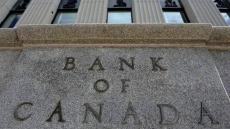VICTORIA — Waves crash in the near distance and a howling wind whips between granite tombstones where giant firs, pines and elms shelter the Victorian-era burial ground that provides the final resting place for monumental figures in Canadian history. They include artist Emily Carr, Gold Rush pioneer Billy Barker and hanging judge Matthew Begbie.
A hike through the winding, tree-lined 40-hectare Ross Bay Cemetery includes spectacular views of the ocean with Washington state's Olympic mountains in the distance.
In use since 1872, the cemetery is named after Isabella Ross, an aboriginal woman whose farm once stood on the sloping property in the Fairfield neighbourhood, now steps from downtown Victoria. Ross, buried in an unmarked grave at Ross Bay in 1885, was the first woman in British Columbia to own land.
An interpretive plaque now marks her grave site.
"It's a beautiful and fascinating place," says Yvonne Van Ruskenveld, a tour guide for the Old Cemeteries Society of Victoria, which hosts regular walks through Ross Bay Cemetery.
"It's full of interesting people," she tells a group of school children touring the cemetery on a recent blustery fall day. "There's Emily Carr. There's Billy Barker. There's Amor de Cosmos. On some of the tombstones, it tells you about various shipwrecks. There's lots to learn in this cemetery, and it's free."
Carr's grave is striking for the simple but heartwarming tributes left by people visiting the cemetery.
Pine cones, chestnuts and sticks of driftwood rest on top of a tombstone at the Carr family plot, which includes the artist and author and her mother, father, brother and three sisters. The tombstone includes Carr's poem, Dear Mother Earth.
"I think I have always specially belonged to you," it reads.
A glass jar near Carr's memorial plaque contains, pencils, brushes and painted rocks left behind by visitors. The plaque reads, "Emily Carr, 1871 to 1945; artist and author; lover of nature."
Begbie, buried at Ross Bay, was British Columbia's first Supreme Court judge. He travelled the province on foot and horseback and was known to bang his gavel and yell, "hang 'em."
Begbie, 1819 to 1894, asked for a small funeral and a wooden cross to mark his grave, but a large stone cross rests at the site. But his wish for this epitaph was granted: "Lord Be Merciful to Me A Sinner."
A large boulder from the Caribou gold fields marks the grave of William "Billy" Barker, the prospector who made the biggest gold strike of the Caribou Gold Rush in 1862. The town of Barkerville in B.C.'s central interior was named after Barker, who never made another strike like the one at Barkerville and died in poverty at the Old Men's Home in Victoria in 1894.
Van Ruskenveld points to a tiny stone marker rising about 25 centimetres above the ground. The tombstone shows a baby sleeping, with a tiny flower bud at the baby's curled up feet. The stone reads, "Oct. 26, 1888, Warren, son of C. and G. Powers, three months."
Van Ruskenveld tells the school children medicines were not always as advanced as they are today and many young children did not experience full lives, hence the unopened flower marking their graves.
If you want to visit Ross Bay Cemetery, the address is 1516 Fairfield Road. Check the Old Cemeteries Society of Victoria website for information about tours: http://www.oldcem.bc.ca, or send an email, oldcem@pacificcoast.net.



